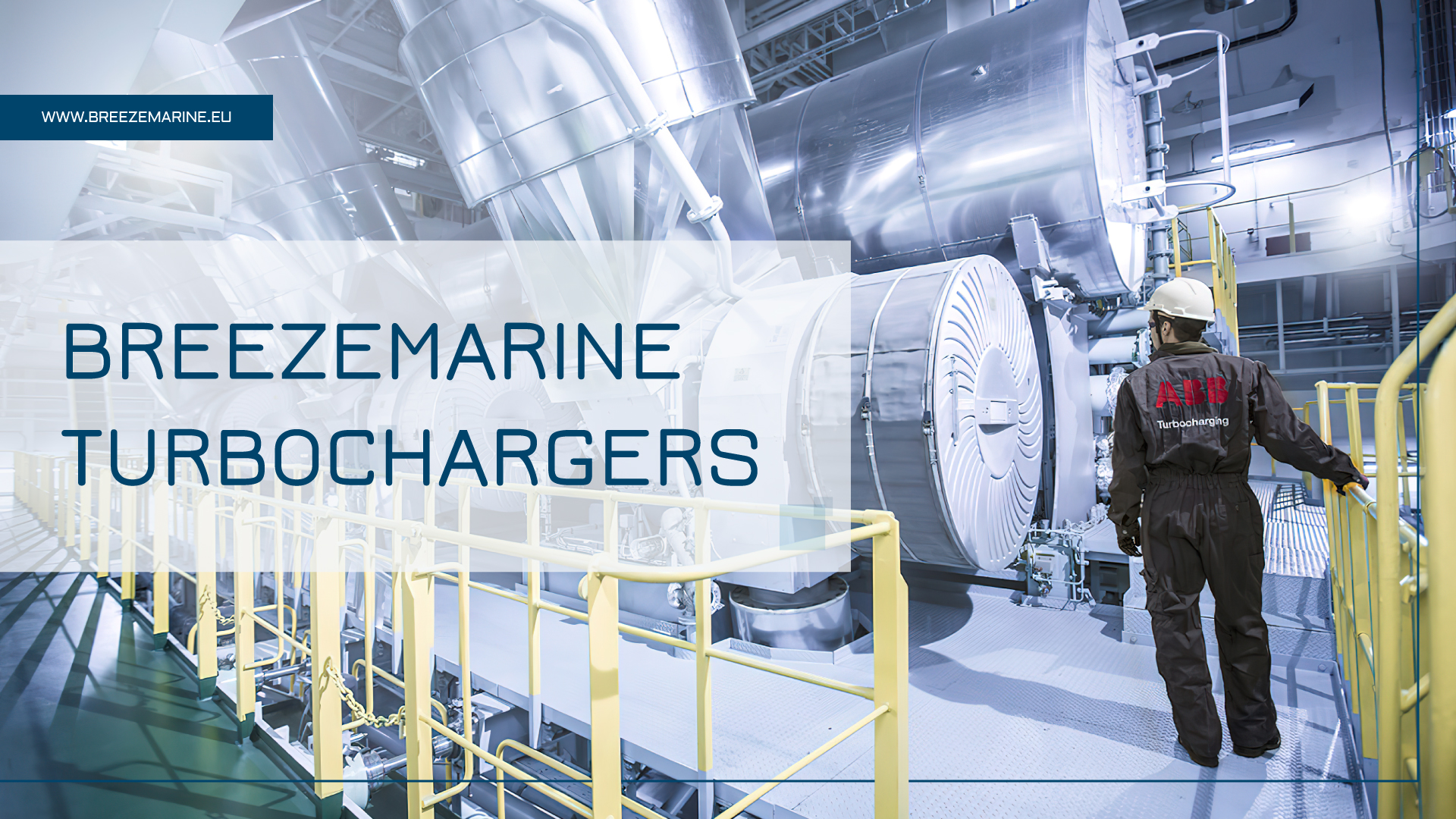Purpose of marine turbochargers on ships
Marine turbochargers boost the performance of marine diesel engines and generate electricity for consumption on board the ship. They work by using exhaust gases to power a generator, which is installed on the rotor shaft of the turbocharger. This generator acts as an exhaust heat recovery device, resulting in energy savings. A highly efficient, small, and powerful generator is required to make this process effective.

How does a turbocharger work?
The principle of operation
Marine turbochargers operate on the principle of using exhaust gases from the engine to drive a turbine, which is connected by a shaft to a compressor. The compressor then supplies compressed air to the engine’s combustion chamber to increase its power output.
The process works as follows: the exhaust gases leave the engine and are directed into the turbine, causing it to rotate. This rotation is transferred through the shaft to the compressor, which increases the pressure of the intake air. The compressed air is then fed back into the engine, where it combines with fuel to create a more powerful combustion process, resulting in increased engine output.
This mechanism is used as a waste heat recovery system that supplies about 10% of exhaust gases to power the turbine that drives a generator. Hybrid marine turbochargers have a generator inside their housing and require similar space as traditional turbochargers, with only minor adjustments needed for conventional diesel engines.
Wide possibilities
By virtue of bidirectional frequency converters, a turbocharger can function both as an engine and a generator. To implement this, the generator needs to be small enough to fit inside the turbocharger. Before installing it on a ship, the compressor needs thorough testing to ensure it complies with the engine and vessel requirements.
A hybrid turbocharger with a generator uses exhaust gas energy to create electricity, similar to a standard gas power turbine. However, a hybrid turbocharger has several advantages over a conventional power turbine, such as:
- Installing the turbocharger requires minimal engine modifications, and the upgrade is relatively simple. There’s hardly any increase in external dimensions, given that Exhaust gas piping and valve regulators are not required.
- A hybrid turbocharger delivers higher efficiency due to the absence of heat and pipeline losses.
- The turbocharger can be accelerated by using the generator as an engine.
Enhancing the design of a marine turbocharger can significantly broaden its applications.
Common Breakdowns and Possible Causes of Turbochargers in Ships
- Turbocharger vibration
Several factors can cause vibration, including imbalanced rotors, misaligned bearings, damaged turbine blades, or worn-out components. Other potential causes include inadequate lubrication, excessive air or gas flow, or issues with the turbocharger’s foundation or mounting. It can be harmful to the turbocharger’s performance and reliability, as well as to other components in the engine system.
- Run-out noise or slower acceleration
Misalignment between the rotor and the housing can cause the rotor to rub against the housing and generate noise. Another possible cause is damage to the turbocharger’s bearings, which can cause the rotor to wobble or become unbalanced, resulting in reduced performance and acceleration.
- Turbocharger Moisture
Moisture is mainly caused by the high humidity levels of the combustion air in marine engines, which is often drawn from the sea. Sea spray and incomplete combustion can also contribute to moisture buildup. When a ship is operating in rough seas, seawater can splash onto the turbocharger, leading to moisture buildup. Incomplete combustion can result in unburnt fuel and water vapor entering the turbocharger. Additionally, when the engine is shut down, the turbocharger cools down quickly, leading to condensation on its surfaces.
- Exhaust gas temperature is higher than normal (at operating power and corresponding engine speed)
Contaminated or partially blocked air filters can make the turbocharger work harder to deliver the required amount of air, thus increasing the exhaust gas temperature. If the exhaust system is partially blocked or damaged, the exhaust gases will not be able to flow out of the engine freely. This can cause back pressure, which increases the temperature.
- Discharge pressure is lower than normal (at operating power and engine speed):
Lower discharge pressure in a marine turbocharger can be caused by worn or damaged components, such as the compressor or turbine wheel, intercooler, piping, or air filter. Carbon buildup, leakage, poor maintenance, and debris can also restrict airflow and reduce pressure.
- Discharge pressure is higher than normal (at operating power and engine speed):
Higher discharge pressure can be caused by increased engine load, carbon buildup, reduced compressor efficiency, restricted air intake, worn turbine blades, or a malfunctioning wastegate.
- Leakage in the housing
Seawater exposure and other environmental factors can cause corrosion, leading to cracks or holes in the housing of a turbocharger. Improper assembly, overheating, and vibration can also cause leaks. Regular inspections can help identify and address potential issues before they cause damage or downtime.
- Lubricating oil darkens quickly (rolling bearings):
Darkening of the lubricating oil can be caused by oxidation, contamination, overheating, wear, and improper maintenance. Contaminants like soot, dirt, or metal particles, and high temperatures from the turbocharger can cause the oil to darken.
- Oil leakage during autonomous lubrication:
No pressure or excessively high pressure in the sealing chamber can lead to oil leakage
What’s the solution?
If you’re experiencing issues with your marine turbocharger, it’s time to make a decision. Breezemarine Group offers an extensive selection of turbocharger replacement parts for all turbocharger types—New and refurbished spare parts, as well as complete turbocharger units. Furthermore, we provide the following services: turbocharger overhaul, emergency service retrofit – upgrade, dynamic balancing, and balancing. Cartridge Service for T/C, T/C Service Agreement, and the after sale service.